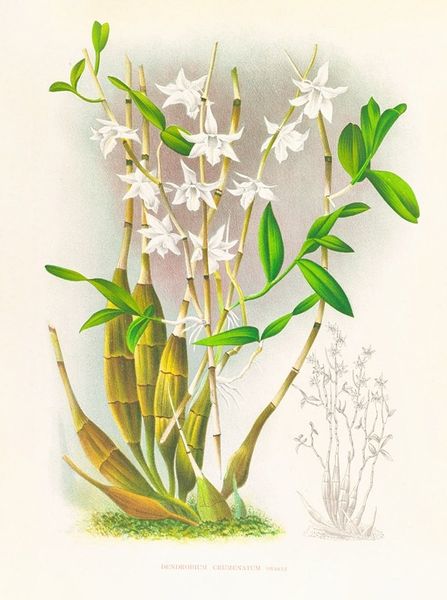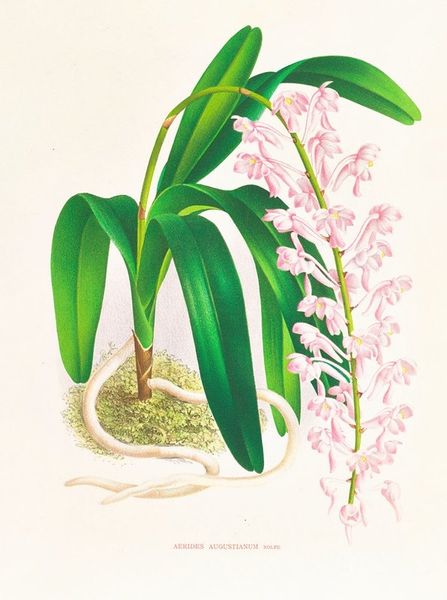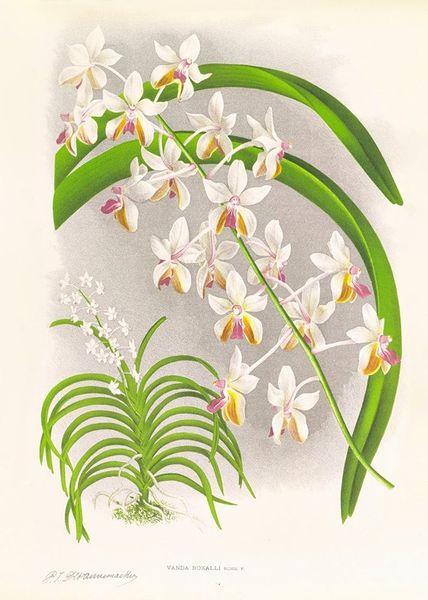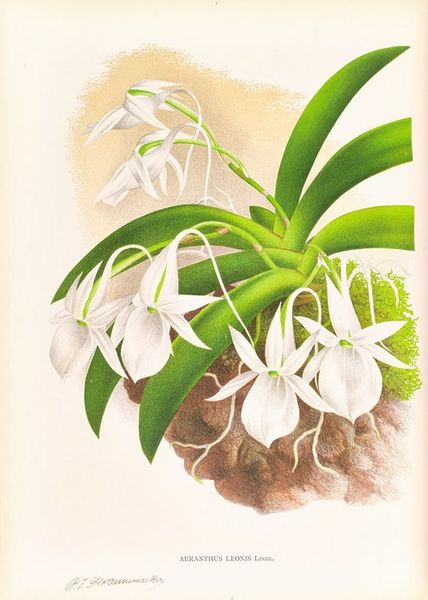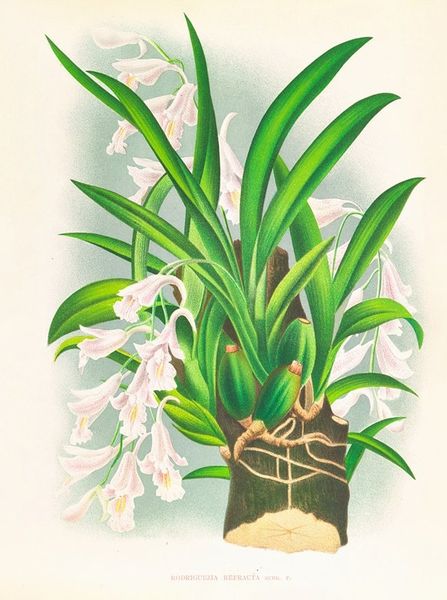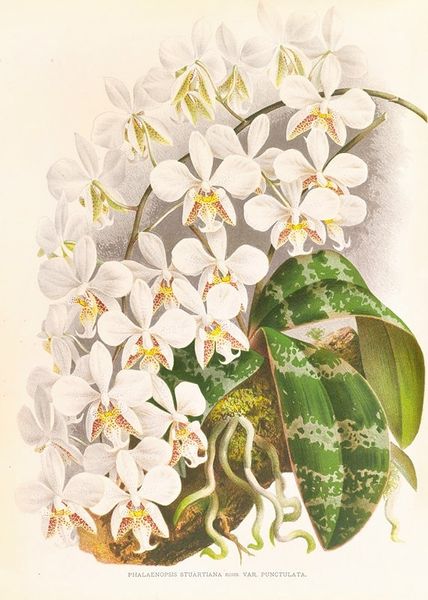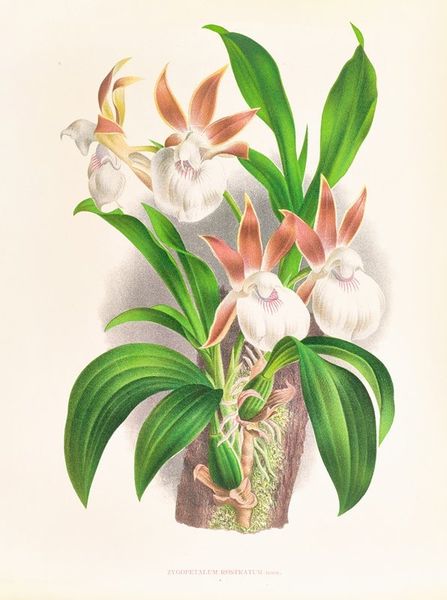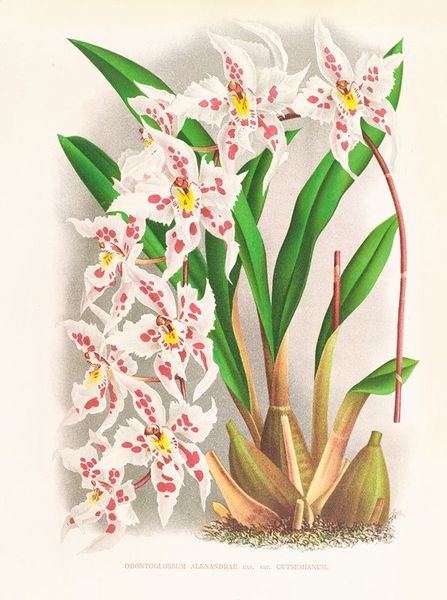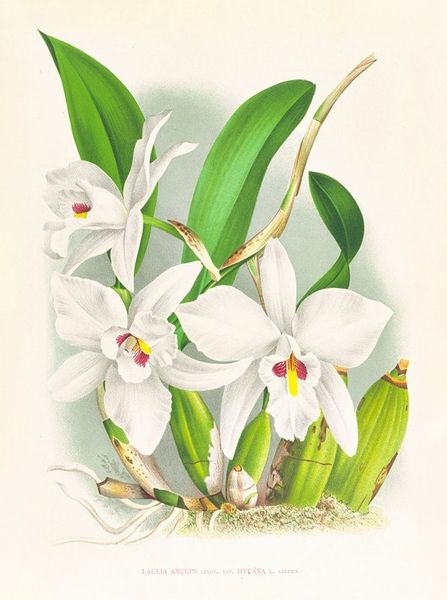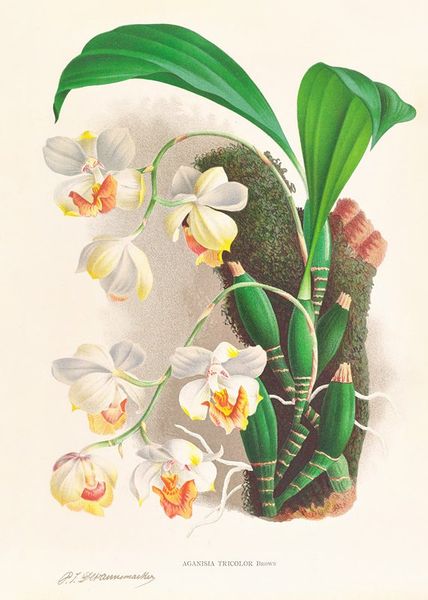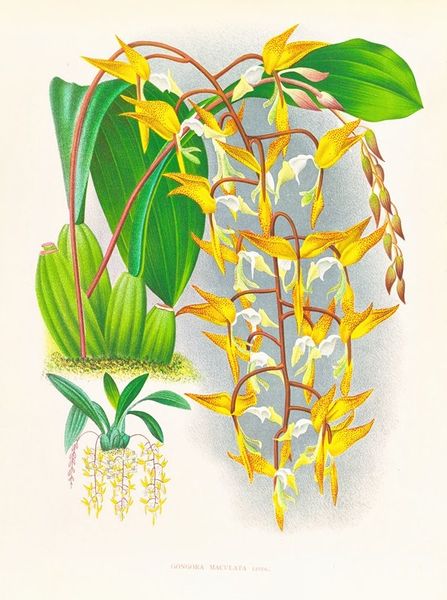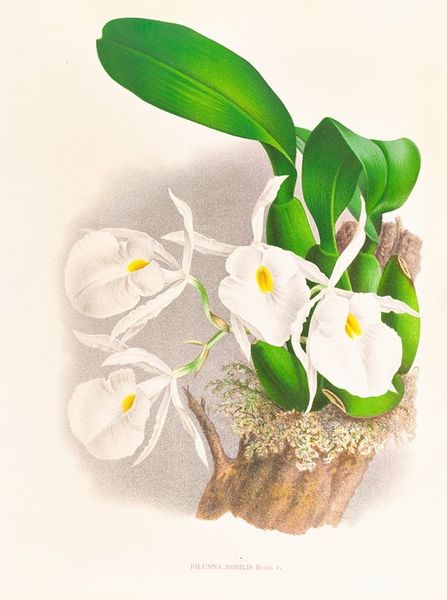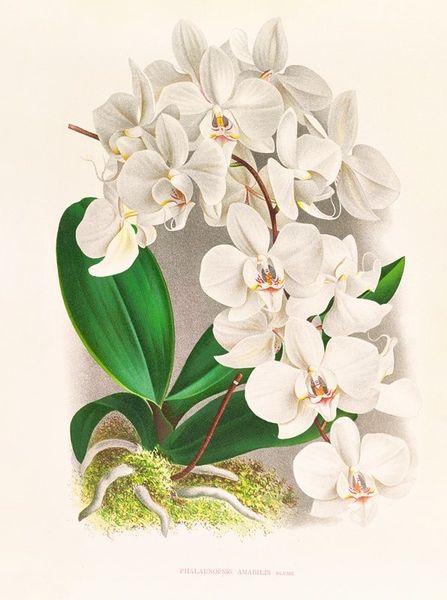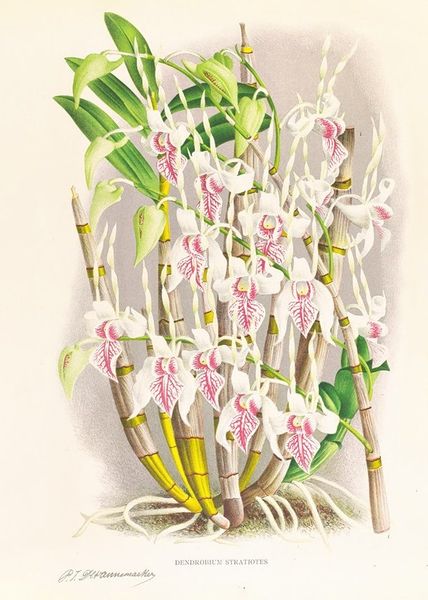
drawing, print
#
drawing
#
art-nouveau
# print
#
floral photography
#
botanical photography
#
botanical art
#
realism
Copyright: Public Domain: Artvee
Curator: Looking at this work, "Angraecum ellisi," a botanical print from sometime between 1885 and 1906 by Jean Jules Linden, I’m immediately struck by the cascading quality. Editor: It's beautiful, yes, with the stark white flowers contrasting against the lush green leaves. There’s an interesting tension in the representation; what do we know of Linden’s printmaking process and how it mediates our relationship with the actual plant, the exoticized other. Curator: Linden employed skilled artists and craftsmen to make these prints, part of the burgeoning botanical publishing industry serving European scientific expansion and collecting. Consider the division of labor, where experts oversaw lithographic reproduction, allowing for dissemination but also a kind of industrial appropriation. The material availability of these botanical prints helped satisfy popular European trends for collecting exotic plants and orchids like this Angraecum ellisi. Editor: The careful balance between scientific illustration and aesthetic pleasure interests me. The composition of shapes is elegant—the pointed petals echoing the ovoid leaves—yet everything adheres to a precise representation. But doesn’t its very realism ironically mask the specific environmental conditions, the true locality and ecosystem of this exotic plant? It’s framed solely for its visual consumption by an elite class. Curator: Right. The consumption extends further, encompassing how images and plants fueled a burgeoning colonial economy and European global influence, connecting industrial technologies with new agricultural markets for trade with commodities from these remote locations where labor was systemically extracted. Editor: While its illustrative and decorative qualities are undeniable, examining these elements through a critical lens can illuminate the complex interplay of aesthetics, knowledge, and exploitation that shaped their creation. The sharp focus and delicate rendering of the flowers draws the eye, while its stark presentation ironically conceals the conditions necessary for this depiction. Curator: This image then acts as an archival fragment, evidence of interlocking social processes involving labor, science, commerce, and how they operated on an international stage. Editor: Absolutely. Its beauty resides as much in its form and lines as it does in the layered, problematic narrative it contains.
Comments
No comments
Be the first to comment and join the conversation on the ultimate creative platform.
